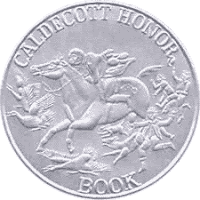
Bringing Asha Home was written by Uma Krishnaswami and was published in 2006. This is a wonderful story written from the viewpoint of a little boy, Arun, who anxiously awaits the arrival of his little sister, Asha, who his parents adopt from India. The process is long and hard for Arun to understand. In the beginning of the book, all he knows is that he is going to get a little sister, and that his daddy is going to fly on a plane to pick her up. As time drags on with no little sister, Arun's dad, who is from India, continually explains to Arun that there are lots of papers that have to be filled out and lots of rules that need to be followed before they can bring Asha home. Arun tells his friend about Asha, and says he hopes that she will bring him a Rakhi, a bracelet traditionally given by sisters to their brothers on Rahki Day. Asha turns a year old and is still not with Arun and his family, but they still celebrate and have family and friends over to see pictures of Asha. Arun makes paper airplanes for Asha and puts one special one on her shelf in her bedroom that he vows to give her when she arrives. One day Arun checks the mail and finds an envelope from India in the mailbox; he runs it inside to his dad, who rips it open and announces that the wait is over - Asha gets to finally come home. Arun decorates the paper airplane he has been saving for Asha and puts it in his dad's suitcase. Arun stays home with his mother to get ready for Asha's arrival. Finally, the big day comes and Arun's dad arrives at the airport with Asha. Asha's new family welcomes her with open arms and hugs her tightly. As they leave the airport, Arun sees that Asha is clutching his paper airplane and a shiny bracelet is tied to it. Arun's dad tells him that the people in India who took care of Asha "thought she couldn't go home to her brother without a rakhi." Asha gives the rakhi to Arun and when he gets home he hangs it on his door to wear on Rakhi day. As Asha sleeps that night Arun puts the plane back on her shelf and says "My best airplane ever has helped bring my sister home."
This book is perfect for children who have experienced adoption in their families, and for children trying to understand another culture's customs, particularly India. I had never heard of Rakhi day until I read this book. The author has a note in the back of the book, as well as a few definitions on the copyright page to help children better understand a few of the terms. Although these were helpful, I was interested in learning a little more about Rakhi day, mainly because I have a son and two daughters and I thought it was wonderful that this holiday celebrates the relationship between a brother and a sister. I am also a scrapbooker and have always complained that there are always accessories for scrapbooks to celebrate the relationship between brothers, as well as the relationship between sisters, but I am hard-pressed to find decorations celebrating the relationship between a brother and a sister. I learned that there is an entire festival devoted to the celebration of Rakhi day (or Raksha Bandhan) in northern India, and that it is celebrated on the day of the full moon of the Hindu month Shravan, usually around late August. Brothers and sisters celebrate their relationship and strengthen their eternal bond of love on this day. Sisters tie a sacred thread or bracelet of Rakhi on their brothers' wrists and pray for his long life. Brothers bless their sisters, present them gifts, and promise to guard them against all hardships in life.
In Bringing Asha Home, Arun hopes to share and create this tradition of Rakhi with his new little sister. This book is a wonderful example of a diverse family (the mother in the story is American and the father is Indian) who adopts a little girl and continues to preserve her cultural heritage, even though they live in America. Children will learn from this book that there is more than one way to become a part of a family, and will be introduced to the process of adoption as well. I would recommend this book to anyone who is going through the process of adoption and trying to explain it to another child. It would also be a great book for a classroom because so many children in today's world are part of diverse families - children from other cultures who are being raised in this country, children who live with their grandparents, etc. - and I believe it is important to assure children that we are all one big world family and that it is okay to come from different backgrounds and cultures. This book will help children feel a sense of belonging no matter where they come from.

























